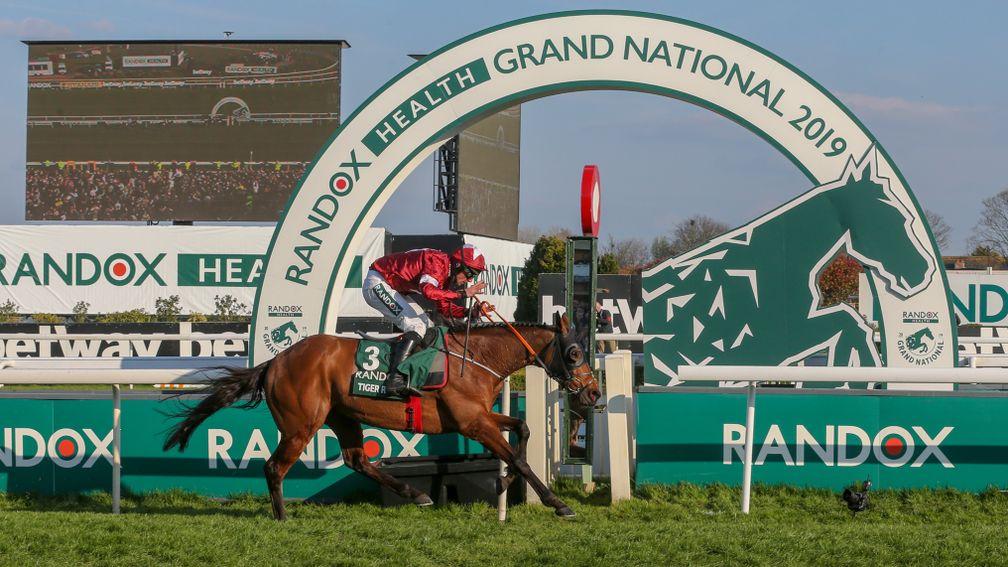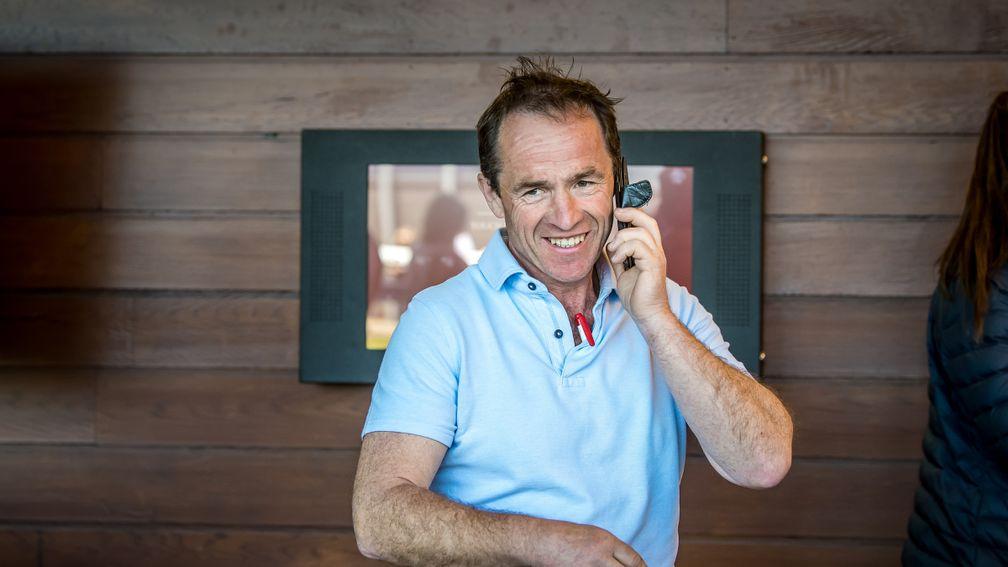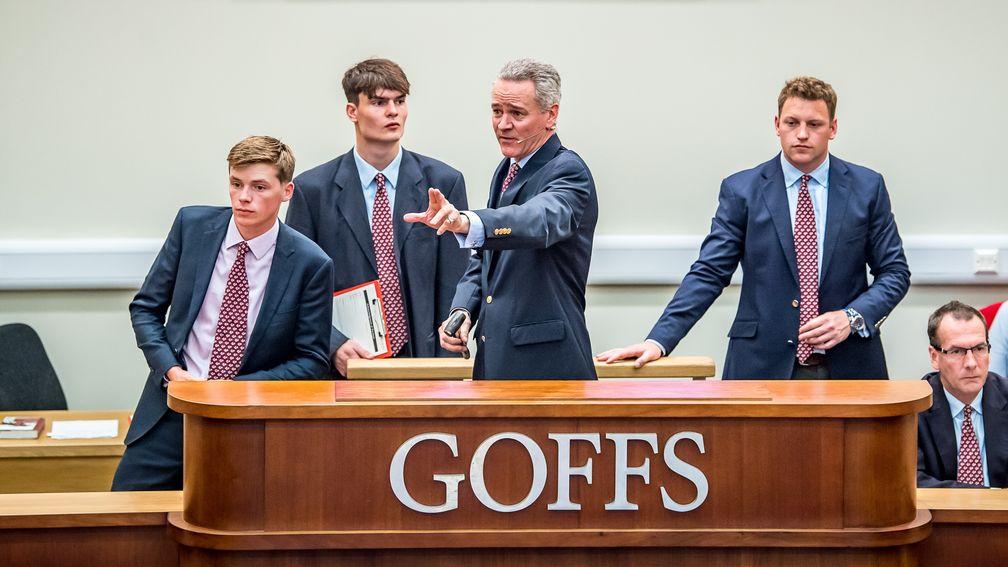Diminutive dual National hero Tiger Roll should give buyers pause for thought
Gigginstown House Stud's star stands at just 15.2 hands high

Size isn't everything. The point was reaffirmed by Tiger Roll on Saturday when the diminutive dynamo became the first horse to land back-to-back Grand Nationals since Red Rum in 1974.
It was a performance that cemented his place in the pantheon of jumping greats, but the irony of such a physical specimen galloping into the history books won't have been lost on bloodstock aficionados and industry insiders.
Tiger Roll stands at just 15.2 hands high, leading some to claim, not unfairly, that one of the most celebrated jumpers in recent memory boasts a physical frame that would have made favour hard to come by had he appeared at an outlet for young jumping stock such as the store sales.
Admittedly Tiger Roll was bred for the Flat, being by Authorized and out of an Entrepreneur mare, and initially fetched 70,000gns as a foal when added to the Godolphin ranks by John Ferguson.
Nor did Mags O'Toole or his owner Gigginstown House Stud have a Grand National in mind when they purchased him for £80,000 as a Triumph Hurdle prospect, a race he duly won in 2014.
But, given the heights he has gone on to scale, are there lessons to be learned from the pint-sized Pegasus?
"If you look at the size of the horses who've won these major races in the last ten years, I don't think the common denominator would be that they're all 16.2 or 16.3 hands," says Michael Moore, whose Ballincurrig House Stud sold recent stars such as Paisley Park, If The Cap Fits and The Glancing Queen.

"When selling stores in the last number of years, the small horse has been impossible to sell," he says.
"He doesn't normally get into a sale, and if he does he doesn't normally command a big price. But from a sales ring point of view, the horse has to fill the eye of the man who's buying him, and I don't see that changing any time soon."
As unfortunate as it may sound that smaller horses struggle to even get into the more lucrative store sales, it would be folly to think that the bloodstock industry is less beholden to fashion than other marketplaces.
One result, no matter how monumental, is unlikely to see a marked shift in buying habits, so the fact remains that demand for the unproven smaller horse will remain limited.
Henry Beeby – chief executive of Goffs, host of the Spring Store Sale and the Land Rover Sale – emphasised the point that the primary function of the auction house is to supply the market with what it wants.
"What we have to do as an auction house is react to what the marketplace looks for, and at a store sale the marketplace normally looks for a horse who's a more traditional jumping type," he says.
"That doesn't stop the Red Rums and the Tiger Rolls doing what they've done, but there's something to be read into the fact that it's been 45 years since a horse has won back-to-back Grand Nationals.

"A smaller horse will generally come to hand a lot quicker, so it would be a different story if our model was like France, where they're running as three-year-olds," says Moore. "The cream of their crop are sold as two-year-olds, either privately or at Arqana, and are then running the following year as three-year-olds.
"If there were more three-year-old hurdles or bumpers in Britain and Ireland, then you'd find that you could get a two-year-old market going and a yearling market going and it could only be good for the whole industry."
Granted the recent headline success of French-breds on these shores, with 14 winners at Cheltenham and a further six at Aintree – including Espoir D'Allen, Al Boum Photo and Frodon, who all debuted at three – perhaps it is time the horizons of the domestic jumping programme were broadened to include more races for jumps-bred three-year-olds.
Moore also highlighted that those looking to sell jumping prospects who may lack the requisite size for a store sale are not entirely without options.
"The only way a small horse will work at the sales is when he's won his race, a bumper or a point, and not as an unbroken store," he says.
"But I think there's possibly an overemphasis on the view that they have to be a certain height to get your investment back. If your horse wins or runs well in a bumper or point-to-point, they definitely have value."
Tiger Roll's sales history has been well documented, having gone from 70,000gns foal to £10,000 Goffs UK horse-in-training purchase before being picked up by Gigginstown House Stud for £80,000 at Cheltenham in December 2013. Perhaps another key take-out from his success is that a good horse can – as the old saying goes – come from anywhere.
"Those horses-in-training sales where we have consignments from the likes of Gigginstown, Godolphin, Shadwell and Juddmonte, there are gems to be picked up in there," says Beeby "Tiger Roll is probably the most high-profile and most celebrated, but he's not alone."
It would be fair to conclude that, even in light of Tiger Roll's success, buyers are unlikely to be knocking each other over to acquire jumping prospects who lack for something in height.
However, he does highlight that those willing to put their preconceptions about size or sales on hold can, on occasion, stumble upon a high-class talent who does not conform to pedigree or price-tag.
It could be said that the buying of bloodstock remains more of an art form and less of a science, and that is something that horseracing is all the richer for.
"The odds were stacked against Tiger Roll, but he's one of the exceptions to the rule," says Beeby. "And that's one of the great joys of our sport and industry, that the most obvious horses don't necessarily win at the highest level, be it Flat or National Hunt."
If you found this of interest you should also read...
Irish breds, Flemensfirth and Mahler come up trumps at Aintree
Four-star Cheltenham hero continues to prove the ultimate bargain
Time to take notice of French-bred success at the Cheltenham Festival
Published on 10 April 2019inNews
Last updated 18:00, 10 April 2019
- ‘It’s been constant pressure for the last six months’ - up-and-coming consignors out to make dreams come true at the Doncaster Breeze-Up Sale
- Three new board members for the National Stud
- Hide The Evidence a first winner for Sands Of Mali with victory at Bordeaux Le Bouscat
- Showcasing filly from a deep Moyglare family set for Gowran Park debut on Tuesday
- Little Big Bear's brother and close relation to Unquestionable face off in Curragh maiden on Sunday
- ‘It’s been constant pressure for the last six months’ - up-and-coming consignors out to make dreams come true at the Doncaster Breeze-Up Sale
- Three new board members for the National Stud
- Hide The Evidence a first winner for Sands Of Mali with victory at Bordeaux Le Bouscat
- Showcasing filly from a deep Moyglare family set for Gowran Park debut on Tuesday
- Little Big Bear's brother and close relation to Unquestionable face off in Curragh maiden on Sunday